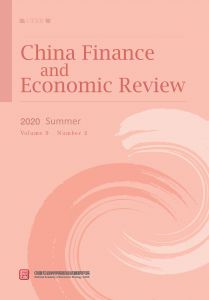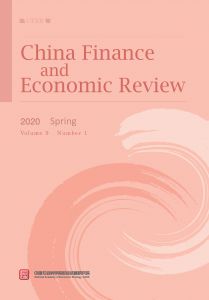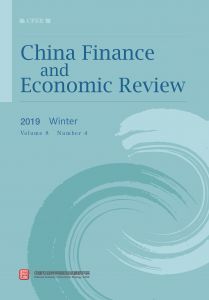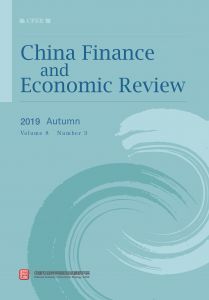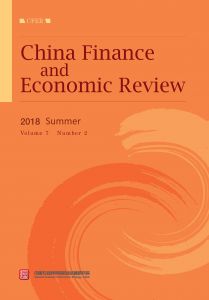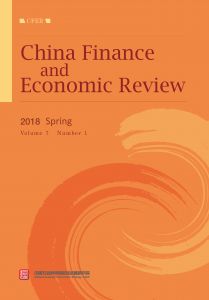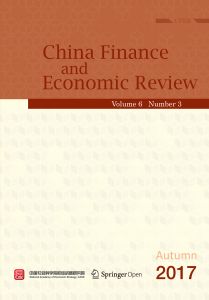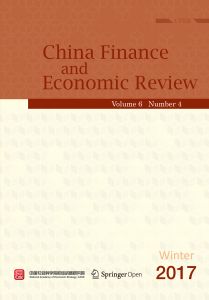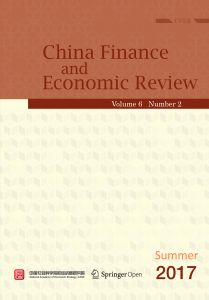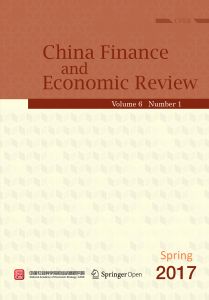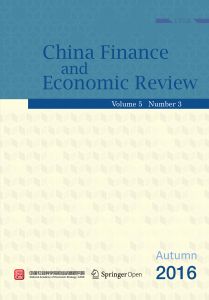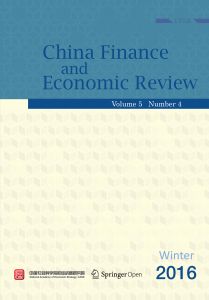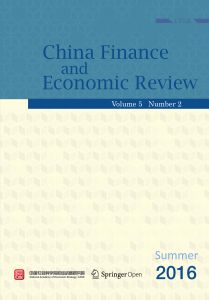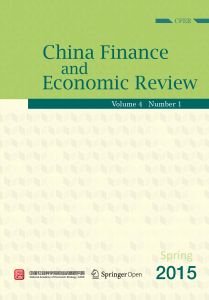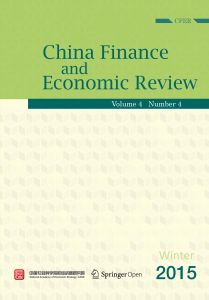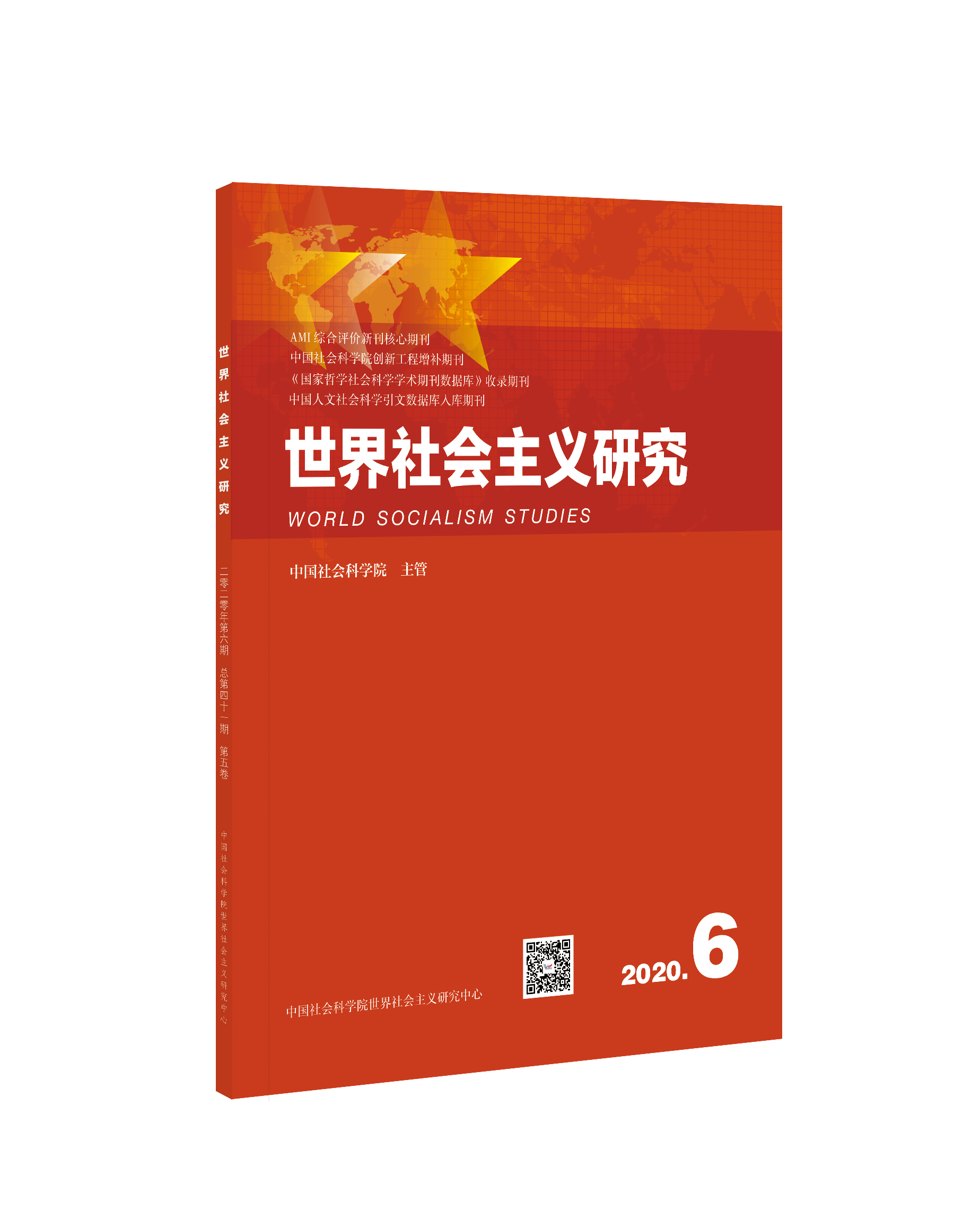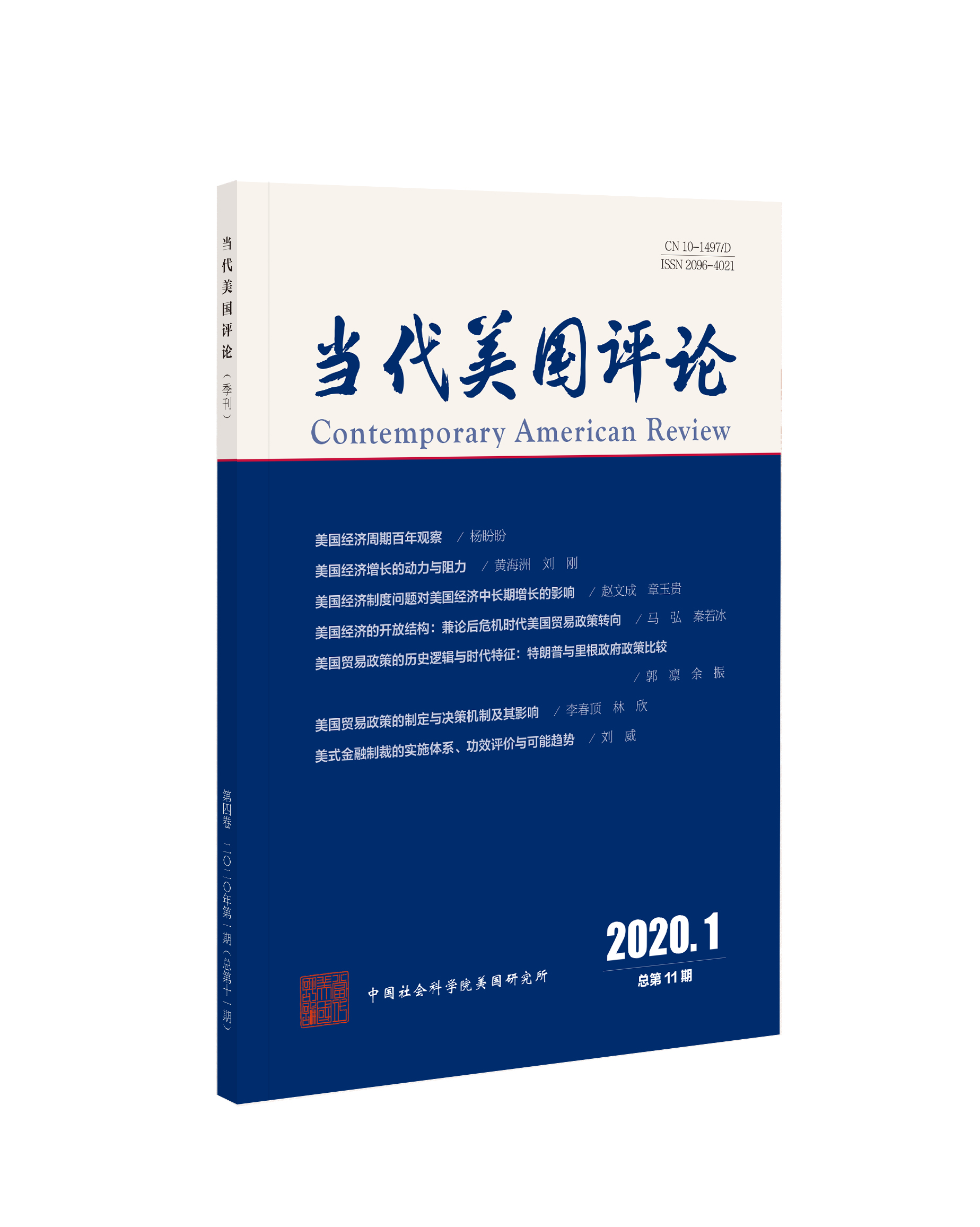最新期刊

目录
过往期刊
参考文献
-
Instructions for Authors
-
编委会
-
Existing contradictions and problems in China’s current economic and social development
-
1. China still lacks a firm foundation for sustaining steady economic growth and thus needs to strengthen internal growth drivers
-
2. Risks and hidden dangers still exist in sectors including public finance, banking, and real estate; some industries are heavily burdened by excess production capacity; and macroeconomic controls have become more difficult
-
3. It has become increasingly difficult to raise agricultural production output and rural incomes
-
4. There is severe air, water and soil pollution in certain regions, and the task of conserving energy and reducing emissions remains arduous
-
5. Major structural problems constraining employment
-
6. Issues affecting people’s quality of livelihood remain
-
-
TFP and labor productivity: empirical facts of China’s macro-economy and issues for long-run economic growth
-
1. Situation and problems of China’s macro-economy in 2013 and 2014
-
2. Structural changes: growth trend of next five years (2014-2019)
-
3. Analysis of efficiency imbalance
-
4. The issue of efficiency compensation: efficient supply and transformation of economic growth mode
-
5. Policy suggestions
-
Appendix: Formula derivation of whole-Society labor productivity growth rate
-
-
Causes of China’s current economic development pattern
-
1. The development-stage causes of the current economic development pattern
-
2. Disadvantages of the current economic development pattern
-
3. Institutional reasons for the formation of China’s economic development pattern
-
-
China’s agriculture management and administration system
-
1. Revolution of China’s agriculture management and administration system
-
2. Background change related to basic agriculture operating system
-
3. Basic agriculture management and administration system construction in China
-
4. Development of new agriculture organizations
-
5. Challenges faced by new agriculture organizations
-
6. Focusing on core farmers
-
7. Conclusions
-
-
Valuation effects in China: scale, structure, and its function in external adjustment
-
1. Introduction
-
2. Literature review
-
3. Theoretical framework of estimating valuation effects
-
4. Estimation of the valuation effects in China
-
5. The role of valuation channels in external adjustments
-
6. Conclusions
-
-
The development of producer services in China
-
1. The background of development in China’s tertiary industry
-
2. Development characteristics of China’s producer services
-
3. The experience of developing China’s producer services
-
4. The problems and development direction of China’s producer services
-
-
Corporate social responsibility and its sustainable development based on elimination of outdated industrial capacity
-
1. Introduction
-
2. CSR and sustainable development under the institution of elimination of outdated industrial capacity
-
3. Implementation of the elimination of outdated industrial capacity in Hebei town
-
4. The characteristics of CSR and its sustainable development in the process of elimination of outdated industrial capacity
-
5. Promoting the CSR and its sustainable development based on elimination of outdated industrial capacity
-
按年份浏览:
- 全部
- 2020
- 2019
- 2018
- 2017
- 2016
- 2015
- 2014
- 2013
[1][1]Hofman, A. (2000). The economic development of Latin America in the twentieth century , Edward Elgar, Cheltenham, UK, Northampton, MA, USA.
[2][2]Nurkse, R. (1947). Domestic and international equilibrium. In Seymour E. Harris (ed.). The new economics , New York: Alfred A. Knopf.
[3][3]Research Group of Cutting-edge Study on China’s Economic Growth. (2012). Long-term growth path, efficiency and potential growth level of China’s economy. Economic Research Journal , 11, 4-17.
[4][4]Research Group of Cutting-edge Study on China’s Economic Growth. (2013). Structural properties and risks of China’s economic transformation and efficiency improvement path. Economic Research Journal , 10, 4-17.
[5][5]WTO. (2010). World Trade Report 2010 , www.wto.org.
[6][6]Ge, L. S. (1997). On the transformation of the economic growth pattern in Soviet Union. Study of Eastern Euro and Central Asia (Dongou Zhongya Yanjiu) , 4, 3-9.
[7][7]Jing, W. M., & Lang, M. Y. (2011). A change of economic growth pattern in the Soviet Union and Russia and its implications to China. Russian Journal (Eluosi Xuekan) , 1 (3), 36-41.
[8][8]Lin, J. Y. (2010). New structural economics: restructuring the framework of development economics. China Economic Quarterly (Jingjixue Jikan) , 10 (1), 1-32.
[9][9]Sumuelson, P. A. (1981). Economics . Commercial Press.(In Chinese)
[10][10]Tan, C. T. (1986). Development Economics. In Song, C. X., etl. (Eds.), Contemporary western thoughts . Hunan People’s Publishing House.(In Chinese)
[11][11]Benigno, P. (2006). Are valuation effects desirable from a global perspective. NBER Working Paper , 12219.
[12][12]Fan, X. Y., Xiao, L. S., & Fang, S. Q. (2011). From the trade adjustment channel to financial adjustment: new development of the international financial external adjustment theory. Journal of Financial Research (Jinrong Yanjiu) , 2, 194-206.
[13][13]Fan, Z. Y., & Shen J. J. (2009). Valuation effects and the assessment of the profits and losses of China’s foreign exchange reserves. Study & Exploration (Xuexi Yu Tansuo) , 138-141.
[14][14]Ghironi, F, P., Lee, J., & Rebucci, A. (2007). The valuation channel of external adjustment. NBER Working Papers , 12937.
[15][15]Gourinchas, P. O., & Rey, H., (2007a). G7 current account imbalances: sustainability and adjustment: from world banker to world venture capitalist: US external adjustment and the exorbitant privilege . Chicago: The University of Chicago Press.
[16][16]Gourinchas, P. O., & Rey, H., (2007b). International financial adjustment. Journal of Political Economy , 115 (4), 665-703.
[17][17]He, L. P., & Lin, J. (2011). Valuation effect in foreign exchange investment: estimation and economic implications. Chinese Review of Financial Studies (Jinrong Pinglun) , 6, 33-48.
[18][18]International Monetary Fund, (2005). Globalization and external imbalances. World Economic Outlook , Chapter III.
[19][19]Lane, P. R., & Milesi-Ferretti, G. M. (2001). The external wealth of nations: measures of foreign assets and liabilities for industrial and developing countries. Journal of International Economics , 55 , 263-294.
[20][20]Lane, P. R., & Milesi-Ferretti, G. M. (2003). International financial integration. IMF Staff Papers, 50 (Special Issue), 82-113.
[21][21]Lane, P. R., & Milesi-Ferretti, G. M. (2004). Financial globalization and exchange rates. IIIS Discussion Papers , 44.
[22][22]Lane, P. R., & Milesi-Ferretti, G. M. (2007a). A global perspective on external positions. In Clarida, R. (Ed.), G7 current account imbalances: sustainability and adjustment , University of Chicago Press: Chicago.
[23][23]Lane, P. R., & Milesi-Ferretti, G. M. (2007b). The external wealth of nations mark II: revised and extended estimates of foreign assets and liabilities, 1970-2004. Journal of International Economics , 73 (2), 223-250.
[24][24]Lane, P. R., & Shambaugh, J. C. (2010). Financial exchange rates and international currency exposures. American Economic Review , 100 (1), 518-540.
[25][25]Nason, J. M., & Rogers, J. H. (2003). The present-value model of the current account has been rejected: round up the usual suspects. Federal Reserve Bank of Atlanta Working Paper , 2003-7.
[26][26]Obstfeld, M, & Rogoff, K. (1995). The intertemporal approach to the current account. Handbook of International Economics , 3 , 1731-1799.
[27][27]Obstfeld, M, & Rogoff, K. (2005). Global current account imbalances and exchange rate adjustments. Brookings Papers on Economics Activity , 1, 67-146.
[28][28]Song, X. J., Chen, D. B., & Ren, R. E. (2006). An analysis on the valuation effects in China’s external imbalance adjustment. Studies of International Finance (Guoji Jinrong Yanjiu) , 3, 57-61.
[29][29]Tille, C. (2003). The impact of exchange rate movements on U.S. foreign debt. Current Issues in Economics and Finance , 9 (1), 1-7.
[30][30]Tille, C., & Eric vanWincoop. (2007). International capital flows. Working Paper of National Bureau of Economic Research , 12856.
[31][31]Zhang, C. W. (2007). Dollar standard, valuation effects and monsoonal currency crisis. Journal of Financial Research (Jinrong Yanjiu) , 3, 50-61.
[32][32]Zhang, B., Wang, X., & Hua, X. P. (2010). Nominal and real returns on China’s foreign exchange reserves. Economic Research Journal (Jingji Yanjiu) ,10, 115-128.
[33][33]Antonelli, C. (1998). Localized technological change, new information technology and the knowledge-based Economy: the European evidence. Journal of Evolutionary Economics , 8, 177-198.
[34][34]Barro, R.J.(1990). Government spending in a simple model of endogenous growth. Journal of Political Economy, 98 (S5), 103-125.
[35][35]Greenfield, H. (1960). Manpower and the growth of producer service . New York & London: Columbia University Press.
[36][36]Grubel, H. G., & M. A. Walker.(1989). Service industry growth: causes and effects . Canada: The Fraser Institute.
[37][37]Jiang, B., Li, J. F. (2013). Government scale, labor-resource intensive industries and development lags of producer services: mechanism and empirical research. China Industrial Economics (Zhongguo Gongye Jingji) , 1, 64-76.
[38][38]Jiang, B. (2013). Research on the development mechanism of producer services sectors in China. Sun Yat-sen University.(In Chinese)
[39][39]Li, J. F. (1994). Industrial nature, the assessment basis, and measurable indicators of the tertiary industry. Journal of South China Normal University (Huanan Shifan Daxue Xuebao) , 3, 1-13.
[40][40]Li, J. F. (1987). Putting the tertiary industry into reproduction scheme. Guizhou Social Sciences (Guizhou Shehui Kexue) , 3, 5-9.
[41][41]Li, J. F. (1990). The tertiary industry economics . Guangdong People’s Publishing House.(In Chinese)
[42][42]State Council of PRC. (2014). Guiding Opinion on Accelerating the Development of Producer Services to Promote Industrial Structure Adjustment and Upgrading[EB/OL], http://www.gov.cn/zhengce/content/2014-08/06/content_8955.htm
[43][43]State Council of PRC. (2012). Industrial Transformation and Upgrading Plan (2011-2015) [EB/OL], http://www.gov.cn/gongbao/content/2012/content_2062145.htm
[44][44]State Council of PRC. (2014). Opinions on Accelerating the Development of Modern Insurance Service Sector[EB/OL], http://www.gov.cn/zhengce/content/2014-08/13/content_8977.htm
[45][45]State Council of PRC. (2012). The 12th Five-Year Plan of Service Sector Development [EB/OL], http://www.gov.cn/zwgk/2012-12/12/content_2288778.htm
[46][46]Bowen, H. (1953). Social responsibilities of the businessman . New York: Harper &Row.
[47][47]Carroll, A. B. (1991). The pyramid of corporate social responsibility: towards the moral management of the organizational stakeholders. Business Horizons , July/ August, 39-48.
[48][48]Chen, X. D., Yu, X. D. (2007). The situation and evaluation of awareness of social responsibility of private enterprises. Journal of Zhejiang University (Humanities and Social Sciences) , 3, 69-78.
[49][49]Davis, K. (1973). The case for and against business assumption of social responsibilities. Academy of Management Journal , 16, 312-322.
[50][50]Fox, T., Ward, H., & Howard, B. (2002). Public sector roles in strengthening corporate social responsibility: a baseline study . The World Bank.
[51][51]Kornai, J. (1979). Resource-constrainted versus demand-constrainted systems. Econometrica, 47 , 801-820.
[52][52]Li, X. L., Yang, J. P. (2012). A reflection of corporate social responsibility based on sustainable development. Ecological Economy (Shengtai Jingji) , 8, 131-135.
[53][53]Liu, J., Liu, R. (2012). Impact of corporate social responsibility on sustainable development—a case study of listed steel company. Soft Science (Ruan Kexue) , 10, 104-106.
[54][54]Peng, J. G. (2010). Reason, contents and motivation of corporate social responsibility. Macroeconomics (Hongguan Jingji Yanjiu) , 1, 3-9.
[55][55]The Administrative Center for China’s Agenda in 21st Century. (2004). Theory and practice of sustainable development index system . Beijing: Social Sciences Academic Press. (In Chinese)
[56][56]Wang, J. Q., Hou, T. T. (2009). Empirical analysis of the impact of corporate social responsibility on sustainable development. Scientific and Technologic Development and Strategy (Keji Jinbu Yu Duice) , 18, 94-96.
[57][57]Wang, Q. Y. (2003). A study of economic transformation of resource-oriented city . Beijing: China Economic Publishing House.(In Chinese)
[58][58]Xin, J., (2009). Research of corporate social responsibility from the respective of stakeholder theory: based on a survey of 1400 corporations in Shandong Province. Journal of Shandong University (Philosophy and Social Sciences) , 1, 120-126.
[59][59]Xu, C. S., Zou, J. (2011). A comparative study of social responsibility between state-owned and private enterprises. Economic Review (Jingji Zongheng) , 10, 23-26.
[60][60]Ye, M. H. (2007). Study of corporate social responsibility and sustainable development. Shanghai Economic Study (Shanghai Jingji Yanjiu) , 11, 85-90.
[61][61]Ye, Q., Ye, M. S. (2013). A comparative study of Chinese corporate social responsibility. Statistical Research (Tongji Yanjiu) , 6, 104-105.
[展开]
相关推荐
手机可扫码阅读


